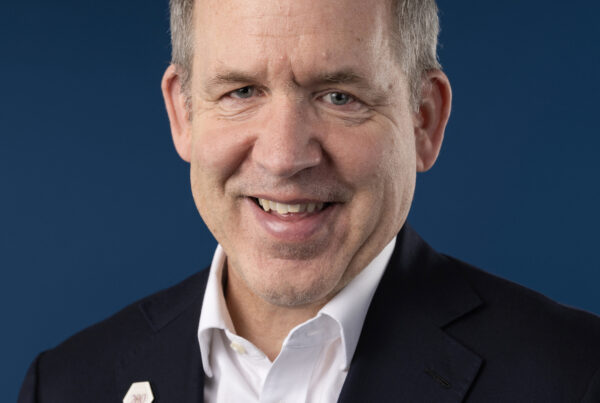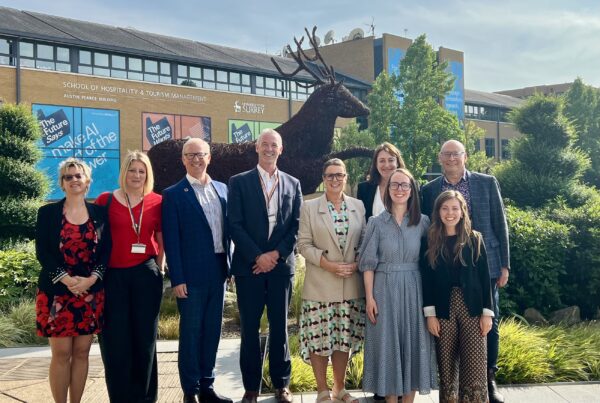How has the higher education sector’s strategic thinking changed in two years?
The HEDx podcast turns 50 with its next episode. In doing so it will feature Michael Crow of Arizona State University as a global leader in higher education innovation and leadership, outlining a bold and differentiated global strategy.
The last two years has seen dramatic change and significant challenges, and we are grateful that leaders from institutions in Australia and around the world have shared their analysis, plans and responses on the last 49 episodes of HEDx, during the most challenging of times in university leadership.
John Dewar as Chair of Universities Australia and VC of La Trobe University, in June 2021, gave a sobering assessment of the impact of the pandemic and paid tribute to staff in all of our institutions. “Everybody is facing a significant financial challenge for 3-4 years or longer. We need to be clear about what value we offer, as Australian universities, teaching online, globally.”
Commentator and policy analyst Andrew Norton could already see long-term impacts on finances in November 2020. He articulated how new policy settings at the time would call for a substantial reset in all institutions in response.
Sandra Harding, as the longest serving VC at a single university, and now the former VC of James Cook University, in September 2021, saw a clear need for renewal. “Wisdom is taking a step back and embracing, owning and getting real about where we are now. Foolishness is hoping we can go back. Renewal and transformation is possible.”
Catriona Jackson as CEO of Universities Australia, in March of this year, passionately observed that “Anyone who walked through a university campus through most of that period knows that it is unnatural to see them quiet and empty. They should be exploding with life and ideas, and hard work.” She also articulated how universities were the “beating heart of a healthy democracy” which is apt as we approach the outcome of an election where universities have again struggled to gain a prominent position in the national debate.
These episodes regarding the state of the sector as a whole, and its context, have been added to by examining leaders’ strategies. Pascale Quester, new in her role at the time in 2020, as VC of Swinburne University of Technology, foreshadowed a path less travelled with universal WIL opportunities and linking the arts and social sciences with technology. “We’re going to get out of the peloton and let all the others cycle madly to be bigger and richer. We will take the road that leads to a different destination, building human capital as a co-creation exercise with partners.”
This became a dominant feature of the strategy she launched as Swinburne Horizon 2025. It focused on people and technology working together to build a better world as a new and different university.
Margaret Sheil described in July 2021 how QUT was reinterpreting its real-world strategy and position in the context of a changed real world.
Torrens University Australia is a private institution that has achieved rapidly growing but balanced markets of domestic and international students across the nation, in combinations of online and campus settings. Their VC Professor Alwyn Louw, said: “We grew from 164 students in 2014 in Adelaide to now more than 19,000. Through continuous innovation it is possible to have a dynamic higher education environment.”
Alongside having a VC, the success of Torrens CEO Linda Brown has demonstrated the importance of the combination of academic and business leadership skills in university strategy. For her to be recognised as Australian entrepreneur of the year, across all sectors, shows just what is possible, and maybe what is needed right now.
Themes of industry engagement and partnerships were outlined in episodes in October 2020 and July 2021 by Alex Subic, of RMIT and Guy Littlefair of AUT. The increasing focus on local and community partnerships were highlighted by Helen Bartlett, Geraldine Mackenzie, Barney Glover, Duncan Bentley and Sandra Harding, as VCs at USC, USQ, WSU, Federation and JCU. Finding a distinctive place in the way communities have changed, in both cities and regions, is clearly a priority for the sector.
Guy Littlefair suggested that: “Universities struggle to understand who the customer is. Is it a student, government, employers? Or is it society or the communities we serve? Not understanding who your customer is, causes problems to business development, relevance, and ultimately accountability.”
David Lloyd as VC of University of South Australia described the principles behind UniSA’s success by saying: “We validate ourselves by the job rate for our graduates, and the repeat custom we get from our partners in terms of meeting their needs.”
While Colin Stirling, VC from Flinders University, invoked the words of his university’s namesake Mathew Flinders: “That he had far too much ambition to rest in the unnoticed middle order of humankind. That’s an ambition that we are seeking to replicate, and fearless somehow just captures that and resonates really strongly with the university community.”
We can see from these quotes and examples, that our sector has been changed irrevocably in terms of policies driving funding, and its financial basis. There are clearly growth opportunities for universities, but also for competitors, in educating new learners and forming new partnerships.
Institutions might need a fundamental review of purpose, mission and strategy. They may need new business models that either draw on current reputations and brand positions or create opportunities to build new ones to capture emerging opportunities.
This is one of the dominant themes in a forthcoming book on The New Learning Economy I have co-authored with Michael Rosemann. We propose that changes in the higher education sector open new and unforeseen opportunities for new learning economy participants, including universities.
In the HEDx episode with Matthew Kuperholz, the Chief Data Scientist of PWC, a view from outside our sector provided thought-provoking messages for current universities, not just our oldest. “Having been to a sandstone university, I question the value of prestige when there are so many alternatives now for a high-quality education, especially for a curious learner.”
Australian universities are already more corporate than some international competitors, but all universities are moving that way. University leaders may need to become even more like business managers, and the way they lead change, transformation, technology and new business models is under scrutiny. It is clashing with underlying academic culture and convention, and one could argue, with outdated governance models.
HEDx has shone the light on the changing nature of university leadership and the challenges and opportunities ahead, with 49 leaders to date. In episode 50, Michael Crow gives pointers of an example of moving more purposefully on with the times.
First published in Campus Review on 18th May 2022
Emeritus Professor Martin Betts, Co-founder of HEDx









